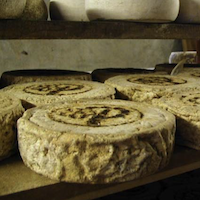Safety assessment of traditional Plaisentif cheese

Accepted: 26 October 2021
HTML: 7
All claims expressed in this article are solely those of the authors and do not necessarily represent those of their affiliated organizations, or those of the publisher, the editors and the reviewers. Any product that may be evaluated in this article or claim that may be made by its manufacturer is not guaranteed or endorsed by the publisher.
Traditional foods are gaining more and more market due to consumers’ increasing willingness to buy products linked to national cultures: among these products, cheese plays an important role. Plaisentif is a traditional Piedmont cheese, only made during violets blooming season. The aim of this work is to evaluate the safety of this cheese, taking into account the EU Regulations. Microbiological hazards as well chemical, biogenic amines and mycotoxins, analysis were investigated. Salmonella spp. and Listeria monocytogenes were never detected in cheeses after ripening. Biogenic amines were present in very low quantities. Ochratoxin A was never detected and patulin was detected in over one cheese during the two years of sampling. This is the first attempt to characterize traditional Plaisentif cheese from a safety point of view. All the information acquired can be held as a necessary basis for reinforcing the culture of traditional products, for economic opportunities in mountainous regions and for safeguarding traditions and cultural identities.
PAGEPress has chosen to apply the Creative Commons Attribution NonCommercial 4.0 International License (CC BY-NC 4.0) to all manuscripts to be published.


 https://doi.org/10.4081/ijfs.2021.9769
https://doi.org/10.4081/ijfs.2021.9769



